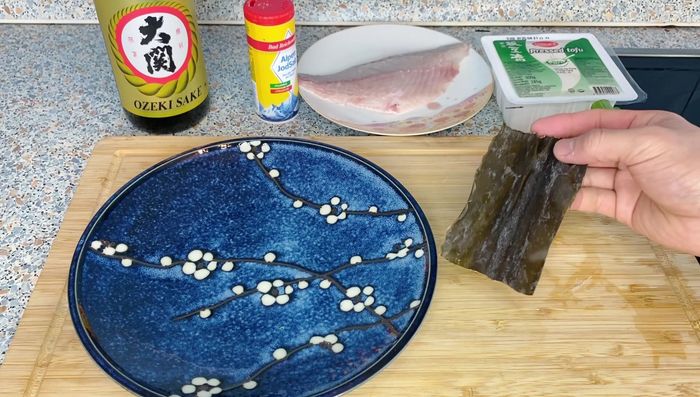Sakamushi, meaning "steamed fish," is a classic Japanese dish renowned for its simplicity and delicate flavors. This cooking method, far from being plain, allows the natural sweetness and subtle nuances of the fish to shine through, untouched by heavy sauces or complicated techniques. The result is a healthy, light meal perfect for a weeknight dinner or a special occasion. Using readily available ingredients and minimal fuss, sakamushi is surprisingly accessible even to novice cooks. The fragrant steam infuses the fish with a delightful lightness, leaving it moist and flaky.
Beyond the incredible ease of preparation, the beauty of sakamushi lies in its versatility. While traditionally made with white fish, you can experiment with various types, each offering its unique taste profile. Ready to experience the magic of steaming fresh fish to perfection? Let's dive into the step-by-step instructions to create your own delicious Sakamushi.
Tools Needed
- Microwave
- Steamer (optional)
- Tweezer
- Kitchen paper
- Saran Wrap (microwave-safe)
Ingredients
- Fish Fillet (e.g., Gireh Head, White Fish, Salmon, Trout): 1/2 fillet
- Scallion
- Tofu
- Kombu Kelp: 1 strip
- Salt: a pinch
- Japanese Sake (or cooking sake, white wine): 2 tbsp + 1 tsp
Step-by-Step Instructions
Step 1. Prepare Ingredients and Fish
- Soak the kombu kelp in about a teaspoon of sake to enhance its umami flavor.
- Remove any bones from the fish fillet using tweezers. Make small incisions on the fish to prevent curling during steaming.
- Sprinkle a pinch of salt on both sides of the fish to remove excess moisture. Let it sit for 5 minutes on kitchen paper to absorb excess liquid.
- Prepare the scallions by cutting them diagonally, and prepare the tofu into bite-sized pieces.




Step 2. Assemble and Season
- Place the fish on top of the kombu kelp in a microwave-safe dish. Arrange the scallions and tofu around the fish.
- Add 2 tablespoons of sake to the dish.


Step 3. Steam the Fish
- Cover the dish with saran wrap (or a plate if using a steamer) and microwave for 7 minutes (adjust time as needed).

Step 4. Serve
- Carefully remove the dish from the microwave. The fish is ready to eat!

Read more: Onsen Tamago: How to Make Perfect Japanese Hot Spring Eggs
Tips
- Use sashimi-quality fish for the best results. Older fish may have a stronger fishy smell that steaming won't remove.
- If you don't have sake, white wine can be used as a substitute, but the flavor will be slightly different.
- The oil that floats on the surface of the cooked fish is healthy and contributes to the dish's flavor.
- Scallions help to reduce any fishy smell.
- Ponzu sauce can be added for extra flavor if desired.
- Don't throw away the flavorful cooking liquid; it's delicious!
Nutrition
- N/A
FAQs
1. What type of fish is best for Sakamushi?
White fish like cod, snapper, or sea bass work best as they are delicate and don't overpower the sake flavor. However, you can experiment with other firm, flaky fish.
2. Can I substitute the sake?
While sake adds a unique flavor, you can substitute it with dry white wine or even chicken broth. The taste will be slightly different, but still delicious.
3. How do I know when the fish is cooked?
The fish is cooked when it flakes easily with a fork and is opaque throughout. Generally, 8-10 minutes of steaming is sufficient for most fillets.
Enjoy your perfectly steamed Sakamushi! This simple recipe delivers a sophisticated yet effortless meal, showcasing the natural flavors of fresh fish. With minimal cleanup and maximum deliciousness, it’s a recipe you’ll want to add to your regular rotation.
